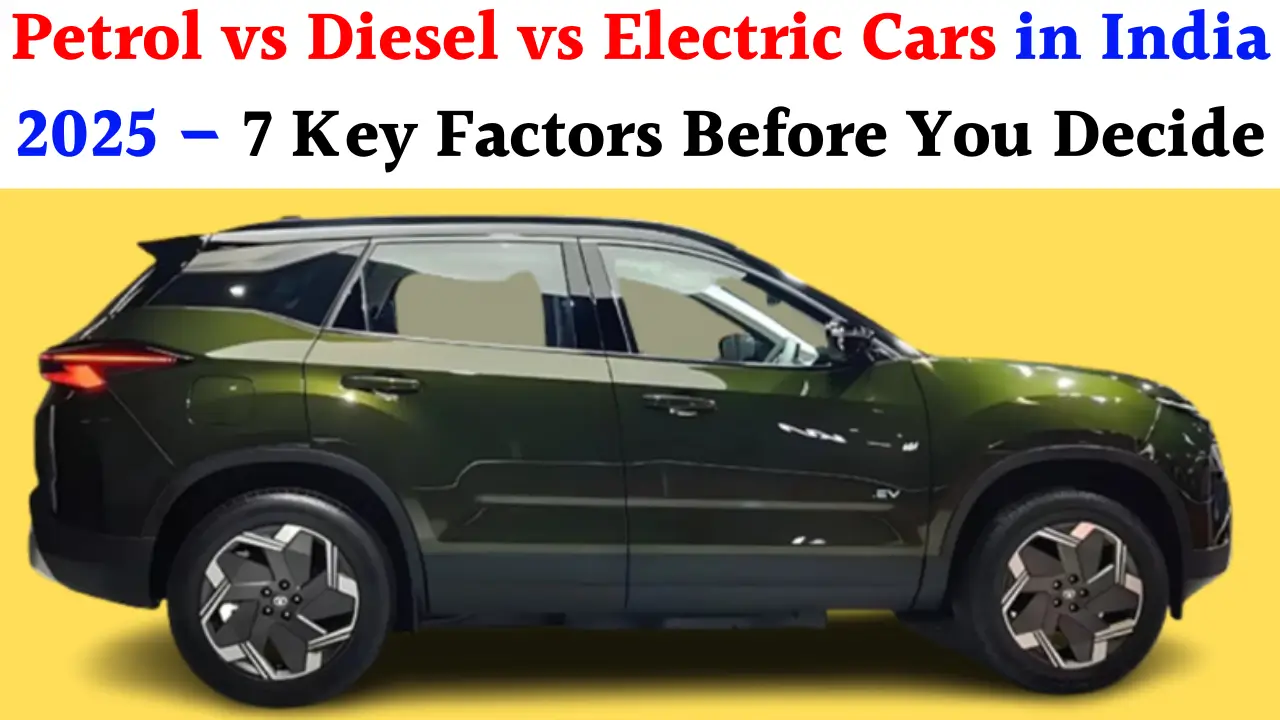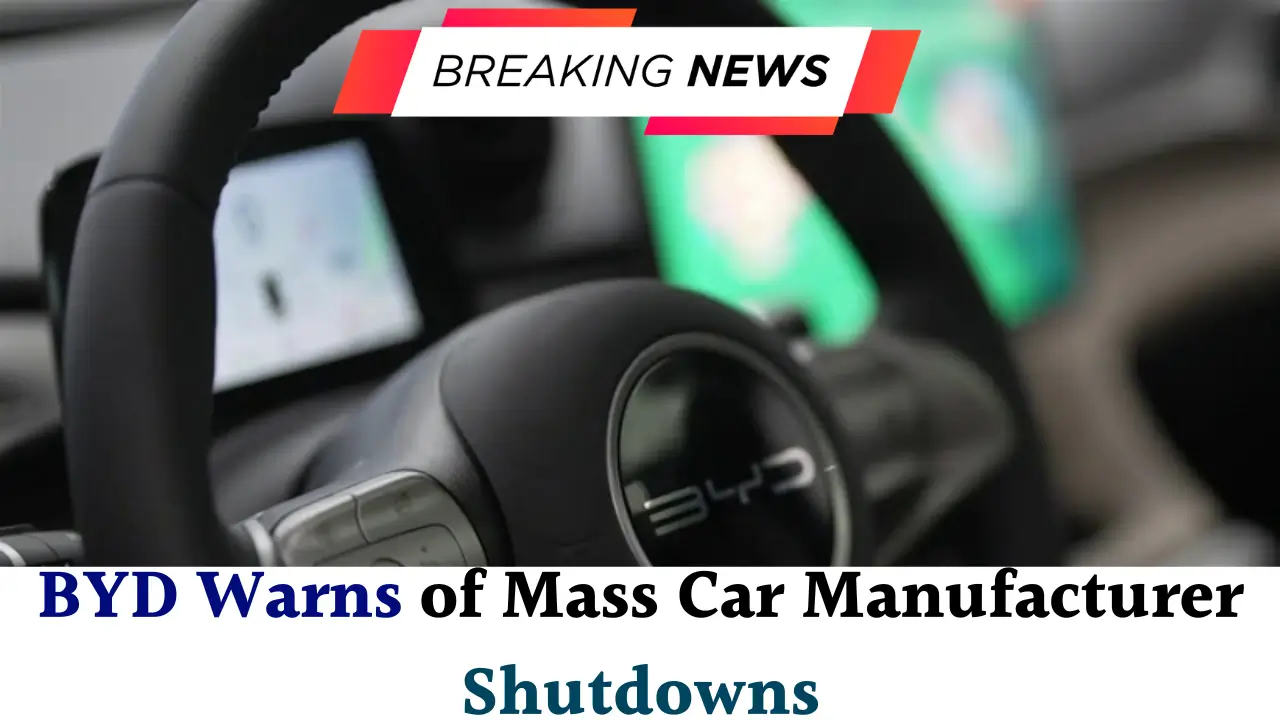Petrol vs Diesel vs Electric Cars in India 2025: As India moves firmly towards the era of sustainable transport, the debate surrounding petrol, diesel, and electric cars in 2025 has intensified. Each type of vehicle offers its own advantages and challenges, making the choice highly dependent on budget, driving needs, and long-term objectives.
With the government’s push towards electrification, stricter emission norms, and rising fuel prices, buyers in India face a critical question: Which fuel type is right for me in 2025? This detailed comparison explores the costs, performance, environmental impact, and long-term suitability of petrol, diesel, and electric cars in India.
Current Market Trends in 2025
The Indian automobile market in 2025 has seen rapid shifts. Petrol cars still dominate sales, primarily due to their affordability and wide availability. Diesel cars, once extremely popular among long-distance drivers, have seen declining demand because of stricter BS6 Phase-II emission norms, higher costs, and limited new diesel launches from major automakers.
Electric vehicles (EVs), on the other hand, are steadily making inroads, with manufacturers like Tata, Mahindra, MG, Hyundai, and new entrants offering expanded EV line-ups. Increased government incentives, lower GST on EVs, and a steadily growing charging infrastructure are enticing more city-based buyers to switch to electric options.
Petrol Cars in India 2025
Petrol vehicles remain the most common choice for Indian buyers in 2025. Their initial purchase price continues to be lower compared to both diesel and electric models. Maintenance costs are generally moderate, and petrol fuel is easily available nationwide.
However, with petrol prices consistently hovering at high levels, running costs remain a concern. Petrol cars are most suitable for city driving and short commutes, where efficiency and low upfront cost matter more than per-kilometre fuel savings.
Diesel Cars in India 2025
Diesel cars were once the favourite for long-distance travellers, but their presence has shrunk considerably in 2025. Many manufacturers, including Maruti Suzuki and Honda, have phased out diesel options. The engines themselves are more expensive to produce and maintain, and newer emission standards have added to the cost.
Nevertheless, diesel cars still appeal to high-mileage users such as intercity travellers and those in transport-dependent professions. The superior torque also makes diesel engines suitable for SUVs and heavy vehicles. But with narrowing price differences between petrol and diesel fuels, their cost advantage has diminished significantly.
Electric Cars in India 2025
Electric cars have become the talking point in India’s automotive landscape. In 2025, several models are available across different price segments, from city hatchbacks like Tata Tiago EV to premium options such as BYD Atto 3 and Kia EV6.
The biggest appeal of EVs lies in their low running costs—charging per kilometre costs far less compared to petrol or diesel. Additionally, EVs produce zero tailpipe emissions, making them eco-friendly and aligned with India’s renewable energy transition.
However, challenges still exist: charging infrastructure, especially in tier-2 and tier-3 cities, is not widespread, and charging times remain longer than conventional refuelling. Battery costs also contribute to higher upfront prices, though government subsidies and falling lithium-ion costs are improving affordability.
Comparative Analysis: Petrol vs Diesel vs Electric Cars in India 2025
The following table offers a clear side-by-side comparison across major factors:
| Factor | Petrol Cars | Diesel Cars | Electric Cars |
|---|---|---|---|
| Initial Cost | Lowest among the three | Higher than petrol, lower than EVs | Highest (though falling with subsidies) |
| Running Cost | ₹8–10 per km | ₹6–8 per km | ₹1–2 per km |
| Maintenance | Moderate, easily available spares | Higher upkeep, costlier repairs | Low (fewer moving parts) |
| Fuel/Charge Availability | Widely available | Widely available but declining focus | Expanding but limited in smaller towns |
| Mileage/Range | 15–22 km/l (depending on model) | 18–25 km/l (higher efficiency) | 150–500 km per charge (model-based) |
| Environmental Impact | Higher CO₂ emissions | Lower CO₂ than petrol but higher NOx | Zero tailpipe emissions |
| Best For | Short city commutes, occasional trips | Long-distance driving, heavy vehicles | Daily urban commutes, eco-conscious buyers |
| Resale Value | Stable | Declining in many markets | Improving but still developing |
Government Policies and Incentives in 2025
In line with its carbon reduction commitments, the Indian government continues to support the adoption of EVs. Subsidies under the FAME-II scheme, state-level incentives like road tax waivers, and reduced GST (5% on EVs versus 28% for conventional vehicles) all make electric mobility more attractive.
Diesel cars, on the other hand, face higher road taxes and registration costs in several states, making them less favourable. Petrol cars still enjoy widespread support, but rising fuel prices make them costlier to run in the long term.
Cost of Ownership Comparison over 5 Years
When analysing the long-term ownership costs, electric vehicles clearly stand out despite their higher purchase price. A typical EV buyer recovers the premium paid within 4–5 years through lower running and maintenance costs. Meanwhile, diesel cars recover their higher purchase cost only if annual mileage is very high (above 15,000–20,000 km). Petrol cars remain attractive for low-usage owners due to their affordability.
Future Outlook: Petrol, Diesel and Electric by 2030
By 2030, India’s car market is expected to be dominated by electric vehicles, possibly accounting for 25–30% of new sales. Diesel cars may remain limited to commercial fleets and SUV segments, while petrol cars will continue catering to budget-conscious buyers and less frequent drivers.
For 2025, the transition is still underway. Buyers need to weigh between short-term affordability (petrol), long-distance performance (diesel), and long-term sustainability (electric).
FAQs
1. Are diesel cars still worth buying in India in 2025?
Diesel cars are now less popular due to stricter emission policies and higher costs, but they are still suitable for high-mileage users and SUV owners.
2. Which car type is cheapest to run in India in 2025?
Electric cars are the cheapest to run, costing only about ₹1–2 per km compared to petrol and diesel.
3. Do petrol cars have any advantage in 2025?
Yes, petrol cars offer the lowest upfront cost and widespread fuel availability, making them ideal for city driving and occasional use.
4. Is charging infrastructure for electric cars sufficient in India now?
It has improved in metros and tier-1 cities, but coverage in smaller towns is still limited in 2025.
5. Which car has the best resale value in India currently?
Petrol cars retain more stable resale value, while EVs are improving as adoption increases. Diesel car resale values are generally depreciating.
Conclusion:
The choice between petrol, diesel, and electric cars ultimately depends on your driving habits and financial considerations:
- If you drive mainly within the city and want the lowest upfront investment, petrol cars are still the go-to option.
- If you cover more than 20,000 km annually, particularly on highways, diesel cars may still justify the premium.
- If you want to future-proof your purchase, save money on running costs, and reduce your carbon footprint, electric cars are emerging as the smartest choice in India 2025.
Given the current pace of infrastructure development and government incentives, EVs are steadily becoming more practical for the average Indian buyer.






